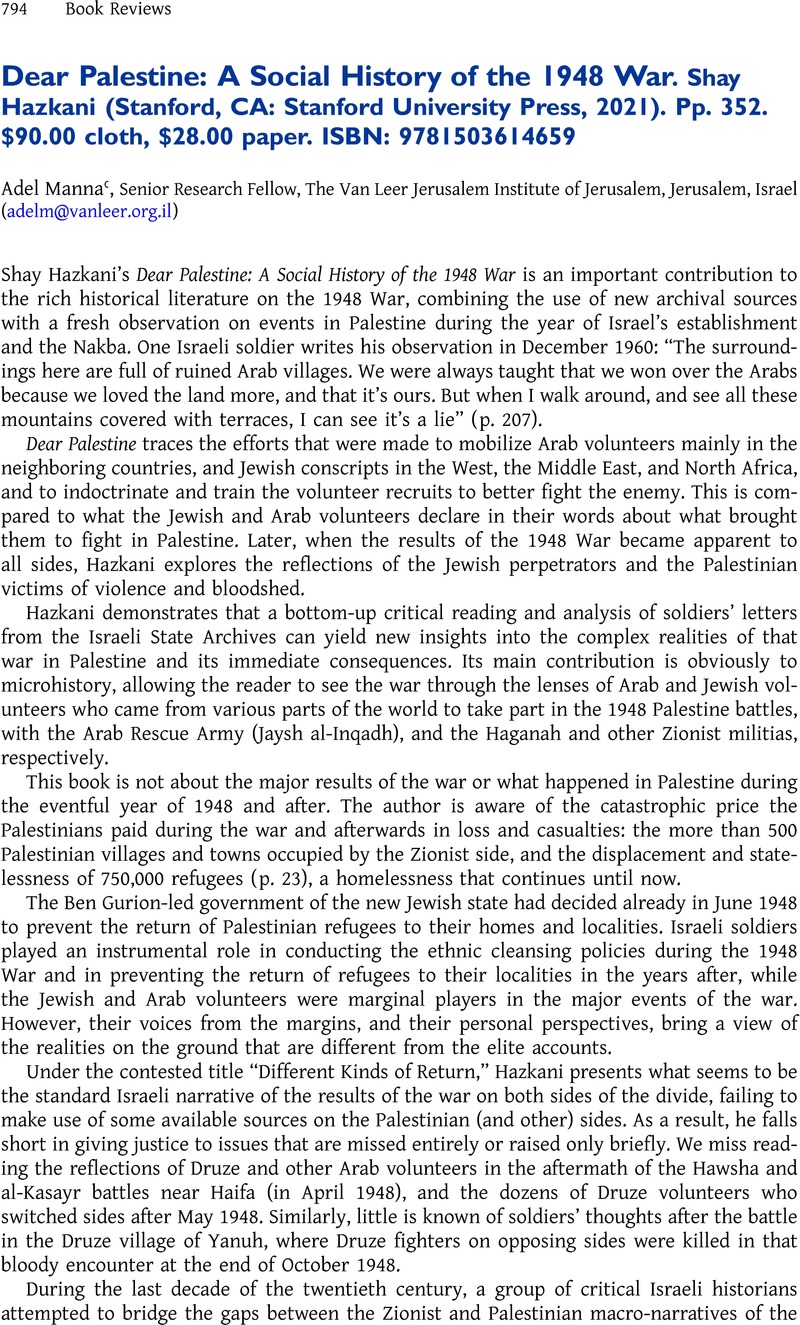No CrossRef data available.
Article contents
Dear Palestine: A Social History of the 1948 War: Shay Hazkani (Stanford, CA: Stanford University Press, 2021). Pp. 352. $90.00 cloth, $28.00 paper. ISBN: 9781503614659
Review products
Dear Palestine: A Social History of the 1948 War: Shay Hazkani (Stanford, CA: Stanford University Press, 2021). Pp. 352. $90.00 cloth, $28.00 paper. ISBN: 9781503614659
Published online by Cambridge University Press: 16 February 2023
Abstract
An abstract is not available for this content so a preview has been provided. Please use the Get access link above for information on how to access this content.

- Type
- Book Review
- Information
- Copyright
- Copyright © The Author(s), 2023. Published by Cambridge University Press



